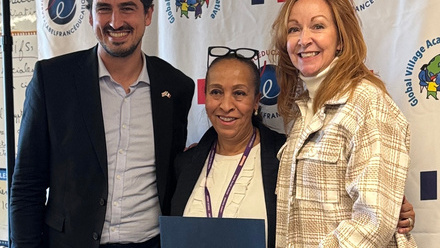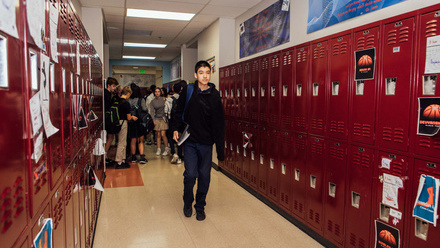Strengthening Community Trust, one Message at a Time
Building trust in your school community – both internally and externally – doesn’t happen by chance. It’s earned through clear, consistent and courageous communication. Many in your community only experience your school buildings through sports or concert performances, missing the incredible learning happening in classrooms daily. Without clear communication about student achievements and educational initiatives, a vacuum can form, often filled by damaging narratives.
Recently, the CONNECT learning community tackled this topic with Jerry Gallagher, partner at Donovan Group, who shared practical strategies for helping schools develop consistent, brand-focused and trust-centered communication. When tailored to a community’s unique needs, this high level of intentionality can transform relationships, increase family engagement and boost your reputation as a school of choice.
Setting the Foundation
To be successful, school leaders must approach communication like any other core operational function, complete with goals, tools, and accountability. Key components of an effective communications and marketing plan include:
- An elevator speech and value proposition that clearly convey what makes your school distinct. Avoid buzzwords like “academic rigor” and connect directly to your mission and vision.
- A content calendar to keep messaging organized, timely, and mission-aligned. Calendar everything for intentional variety and timing. Use campaigns with purpose; plan not just when but what and how content flows together.
- A variety of messaging mediums tailored to meet your audience where they are, including social media, email newsletters, text messaging and more.
- A library of positive stories and visuals that can be shared proactively—and drawn upon during challenging times.
Gallagher also stressed the importance of measuring communication success with specific metrics, ensuring that storytelling and strategy remain aligned with the school’s mission, vision and goals.
Bringing the plan to life
Turning strategy into action requires both creativity and consistency. Actionable ideas for engaging both internal and external audiences include:
- Showcasing people and culture. Celebrate staff anniversaries, highlight teacher testimonials, and share stories that humanize the school experience.
- Using testimonials wisely. Create a Google form for staff, parents, or students to submit stories that capture authentic voices and experiences.
- Leaning into visuals. Short videos featuring your campus, community, and students can be powerful tools for recruitment and storytelling.
- Cross-advertising with one-pagers posted at school events and games.
- Celebrating a wide range of students and staff consistently — not just athletics
- Highlighting the wider community. Incorporate local amenities and pride points into job postings and recruiting materials to strengthen your school’s appeal.
Social media continues to be a relevant medium for reaching families — especially when used strategically — but never rely on it for deep engagement or sensitive conversations.
Timing, tone, and transparency
Drawing on his experience supporting schools nationwide, Gallagher offers practical hacks to support your efforts. For instance:
- Post when your audience is listening. Facebook engagement peaks around 6 AM, 12 PM, 3 PM, and 8 PM, with Sunday evenings especially strong for reaching parents.
- Avoid Friday afternoons and evenings, when attention tends to drop.
- Keep messaging consistent but manageable. Aim for no more than three social media posts per day to maintain quality over quantity.
- Empower your ambassadors. Encourage parents and staff to share school content to amplify reach and authenticity.
When it comes to crisis communication in particular, transparency is critical. In the event that something goes wrong, schools should communicate honestly with their entire community, rather than selectively sharing information. “When you tell your story truthfully—and quickly—you protect your credibility,” he said.
Trust is not an automatic byproduct of communication. It’s the outcome of clear, consistent, and thoughtful communication.
The next CONNECT cohort meeting will be held on November 13. Learn more about CONNECT and the League’s 13 additional learning communities here.






